A history of Sony Alpha - Minolta AF 50 mm f/1.7 versus Sony DT 50 mm f/1.8 SAM
3. Build quality
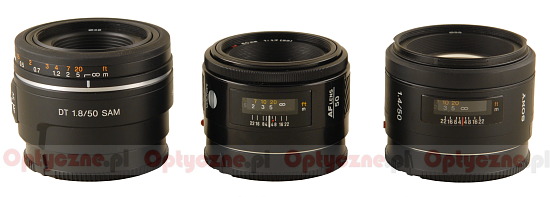 |
Let’s start with comparing the Minolta 1.7/50 with propositions of its contemporary rivals. The following chart presents a comparison to other 1.8/50 class lenses. As you can see, they represent two types of approach here. The first one consists of cutting the costs as much as you can by the usage of plastics whenever it is only possible - even in the mount. The Canon and the Sony lenses represent this class of products. The second approach was used in the case of the Minolta and the Nikkor. Here, the quality of used materials is better and the mounts – made of metal. In the Minolta lens we can even find a fully-fledged distance scale behind a window and a depth of field scale, which other rivals lack. The Minolta seems to be the most solid and the most attentively designed lens of the whole group.
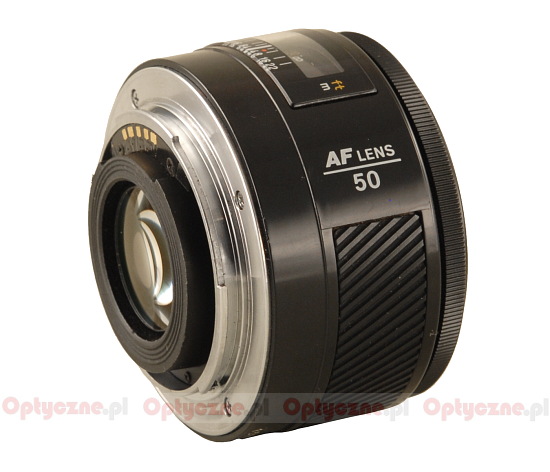 |
Please Support UsIf you enjoy our reviews and articles, and you want us to continue our work please, support our website by donating through PayPal. The funds are going to be used for paying our editorial team, renting servers, and equipping our testing studio; only that way we will be able to continue providing you interesting content for free. |
- - - - - - - - - - - - - - - - - - - - - - - - - - - - - - - - - - - - - - - - - - - - - - - -
Looking at the Minolta and the Sony from the side of the mount we can find several significant differences. Apart from different materials, used for the mount, we also see a different number of contacts: there are 5 of them in the case of the Minolta and as many as 8 in the case of the Sony; the Minolta has a “screwdriver” mechanism and the Sony lacks it (because of the SAM motor). What’s interesting the diameters of the rear elements in both lenses are exactly the same, amounting to 23 mm. If you take into account the fact that the Minolta is a bit faster and designed to work on full frame you might start wonder why.
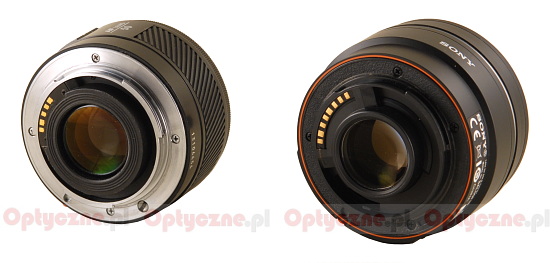 |
That’s not the end. The whole Sony lens’s barrel is both bigger and wider than the Minolta’s. The Sony sports an AF/MF switch and the Minolta lacks it. As we mentioned before, the Minolta has a distance scale window and in the case of the Sony the scale is printed directly on the manual focus ring.
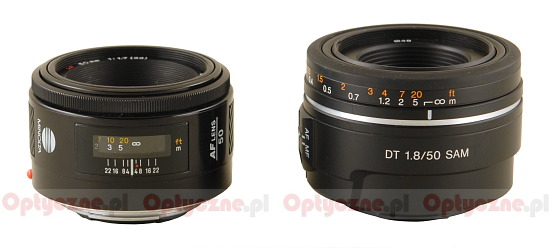 |
As we already entered the topic of rings, let’s write something more about them. Actually both rings are far from being comfortable so you can’t count on great manual adjusting precision. The Sony’s ring is a bit wider but not ribbed, the Minolta’s is ribbed but narrow. The Minolta’s ring moves smoothly and noiselessly, the Sony’s moves with significant whirring and scrapping. In both cases, this ring’s movement makes the whole elements system shift simultaneously so the focal lengths of the lenses don’t change. Both lenses end with a non-rotating filter thread with the same diameter of 49 mm.
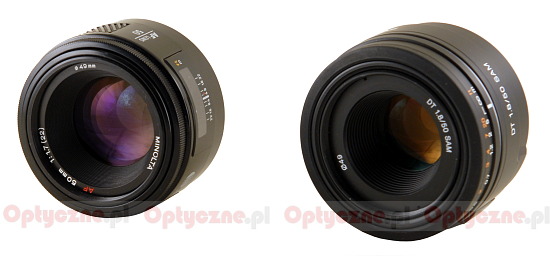 |
The optical constructions of both lenses are very similar (although not exactly the same), because there are 6 elements in 5 groups in each of them. In no lens were used low-dispersion or aspherical elements. Both lenses have a circular aperture with 7 diaphragm blades which theoretically can be closed down to f/22. As we already mentioned in the Sony DT 50 mm f/1.8 SAM test the aperture closes down rather to f/19 than to f/22.
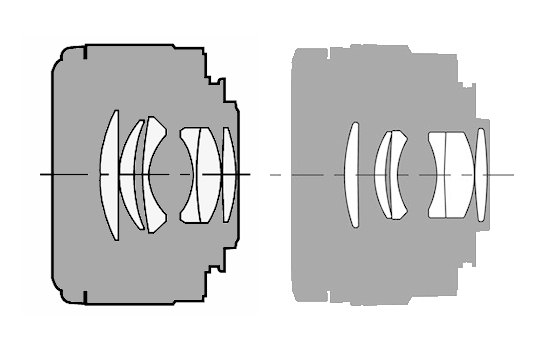 Cross section of Minolta AF 50 mm f/1.7 (left) and Sony DT 50 mm f/1.8 SAM (right) |






